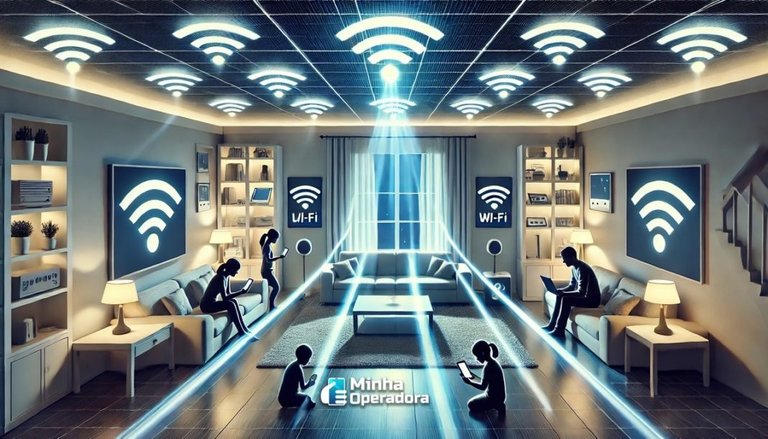Technology
Li-Fi: the internet that uses light and promises to be 100 times faster than Wi-Fi
If you've ever been frustrated by the slowness of your Wi-Fi connection, prepare for the future: Li-Fi is coming, bringing revolutionary technology. Imagine accessing the internet just by pointing your cell phone at an LED lamp. That's exactly what Li-Fi promises. It uses visible light to transmit data, offering a faster, more stable and more secure connection than Wi-Fi. But how is this possible? Let’s understand more about this innovation that is about to transform our digital lives.

What is Li-Fi and how does it work?
Li-Fi, short for Light Fidelity, is a wireless communication technology that uses LED or infrared light to transmit data. Unlike Wi-Fi, which uses radio waves, Li-Fi converts binary signals into flashes of light that blink at a speed imperceptible to the human eye. This makes it possible to transmit information at speeds of up to 224 gigabits per second.
For example, in an environment equipped with Li-Fi luminaires, each lamp can serve as a connection point, eliminating the need for traditional routers. By pointing your cell phone at this lamp, you can connect to the internet. Just like that!
Li-Fi vs Wi-Fi: what's the difference?
When we compare Li-Fi and Wi-Fi, the first big difference is speed. While Wi-Fi averages up to 300 megabits per second, Li-Fi can reach much higher speeds, reaching up to 100 gigabits per second in ideal conditions.
Furthermore, Li-Fi offers other advantages:
Safer: The light does not pass through walls, making it difficult for third parties to intercept the signal.
Less interference: When using light, it avoids interference from other electronic devices, common in radio wave connections.
However, Li-Fi has one point to overcome: the need for a direct line between the light source and the device. In other words, if you leave the lit environment, you lose the connection.
In the future, we can imagine entire cities connected by Li-Fi, where street lamps would serve not only to illuminate, but also to provide internet. This would reduce the need for heavy infrastructure such as telecommunications towers, making connectivity cheaper and more accessible for everyone.
Li-Fi is just beginning its journey to revolutionize connectivity. Although it still needs to overcome some challenges, the advantages in terms of speed, security and sustainability make this technology a great promise for the future of the internet. In the coming years, who knows, we will all be connected by the light from the lamps in our homes, streets and offices.